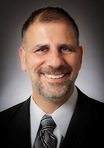The Quality Without a Name
 The only way to build beautiful and functional public spaces is to learn the code that unlocks the riddle: how do such places happen? We have all experienced environments that exhibit the timeless way of building. Alexander said these places reveal “the quality without a name.” Think back to a place where everything seems just right. You cannot quite put your finger on it, it is hard to explain to somebody else, and your words will always seem inadequate—but there is something there that transcends other places you have experienced. Alexander suggested, “There is a central quality, which is the root criterion of life and spirit in a man, a town, a building or a wilderness. This quality is objective and precise, but it cannot be named.”Why does this matter? When you consider that there are billions of people in the world, the challenge that the Imagineers had to create spaces that appeal to such a broad range of opinions and cultures would seem insurmountable. However, Walt and his design team understood what Alexander meant, and they achieved this “quality without a name”—the quality that appeals universally to all people—in many parts of Disneyland. Surely this is one of the reasons for the park’s tremendous success and why guests keep coming back. Had he lived to build his other environmental design projects, Walt would have infused them with the same quality. “Success is doing ordinary things extraordinarily well,” according to business philosopher Jim Rohn; this was one of Walt’s greatest strengths.Walt was not the first person to produce animated films, but he elevated the art form to a level that has yet to be topped. In Designing Disney’s Theme Parks, cultural historian Karal Ann Marling said, “The painstaking art of animation was, after all, the art of perfecting the world. It was a world over which Walt Disney exercised total, beneficent control.” Walt wanted to have the same impact on the art of three-dimensional spatial design with the opening of Disneyland. Millions of visitors come to the Disney theme parks to experience the Disney “magic.” So what exactly are they looking for? In Disneywar, James B. Stewart defined the Disney magic as that moment when “people’s apprehension turns into awe and delight.” When Disney guests step into the environment based on a timeless way of building—an environment that has the quality without a name—they realize that they are in a place where their dreams can come true.Perhaps you have witnessed how a carefully designed, immersive environment can make a significant impression on the individual and can quickly change one’s mood and behavior. Walt had the vision and desire to create such a place. As a result, he changed the way we look at the public realm. How did he do this? Why are some places filled with life while other places seem so lifeless?Christopher Alexander suggested that “What we call ‘life’ is a general condition, which exists, to some degree or other, in every part of space: brick, stone, grass, river, painting, building, daffodil, human being, forest, city.” Alexander added, “The key to this idea is that every part of space—every connected region of space, small or large—has some degree of life.” Most importantly, “This degree of life is well defined, objectively existing, and measurable.” A space that demonstrates a high-quality, positive experience for the majority of people is one that has a “higher degree of life.” Understanding what these measurable qualities are can help to unlock the riddle of how to create wonderful places.Many urban planners and architects find it important to be able to measure how successful a space or structure is. Alexander tried to be more precise by saying, “We are going to pay attention to what we can see and what we can identify and what we can know.” That is the start. It is also important that the knowledge be shared, that it be “put in some kind of experimental form, that another person can then be convinced of.” Architect Matthew Frederick provided one definition for sharable knowledge. He suggested, “If you can’t explain your ideas to your grandmother in terms that she understands, you don’t know your subject well enough.”
The only way to build beautiful and functional public spaces is to learn the code that unlocks the riddle: how do such places happen? We have all experienced environments that exhibit the timeless way of building. Alexander said these places reveal “the quality without a name.” Think back to a place where everything seems just right. You cannot quite put your finger on it, it is hard to explain to somebody else, and your words will always seem inadequate—but there is something there that transcends other places you have experienced. Alexander suggested, “There is a central quality, which is the root criterion of life and spirit in a man, a town, a building or a wilderness. This quality is objective and precise, but it cannot be named.”Why does this matter? When you consider that there are billions of people in the world, the challenge that the Imagineers had to create spaces that appeal to such a broad range of opinions and cultures would seem insurmountable. However, Walt and his design team understood what Alexander meant, and they achieved this “quality without a name”—the quality that appeals universally to all people—in many parts of Disneyland. Surely this is one of the reasons for the park’s tremendous success and why guests keep coming back. Had he lived to build his other environmental design projects, Walt would have infused them with the same quality. “Success is doing ordinary things extraordinarily well,” according to business philosopher Jim Rohn; this was one of Walt’s greatest strengths.Walt was not the first person to produce animated films, but he elevated the art form to a level that has yet to be topped. In Designing Disney’s Theme Parks, cultural historian Karal Ann Marling said, “The painstaking art of animation was, after all, the art of perfecting the world. It was a world over which Walt Disney exercised total, beneficent control.” Walt wanted to have the same impact on the art of three-dimensional spatial design with the opening of Disneyland. Millions of visitors come to the Disney theme parks to experience the Disney “magic.” So what exactly are they looking for? In Disneywar, James B. Stewart defined the Disney magic as that moment when “people’s apprehension turns into awe and delight.” When Disney guests step into the environment based on a timeless way of building—an environment that has the quality without a name—they realize that they are in a place where their dreams can come true.Perhaps you have witnessed how a carefully designed, immersive environment can make a significant impression on the individual and can quickly change one’s mood and behavior. Walt had the vision and desire to create such a place. As a result, he changed the way we look at the public realm. How did he do this? Why are some places filled with life while other places seem so lifeless?Christopher Alexander suggested that “What we call ‘life’ is a general condition, which exists, to some degree or other, in every part of space: brick, stone, grass, river, painting, building, daffodil, human being, forest, city.” Alexander added, “The key to this idea is that every part of space—every connected region of space, small or large—has some degree of life.” Most importantly, “This degree of life is well defined, objectively existing, and measurable.” A space that demonstrates a high-quality, positive experience for the majority of people is one that has a “higher degree of life.” Understanding what these measurable qualities are can help to unlock the riddle of how to create wonderful places.Many urban planners and architects find it important to be able to measure how successful a space or structure is. Alexander tried to be more precise by saying, “We are going to pay attention to what we can see and what we can identify and what we can know.” That is the start. It is also important that the knowledge be shared, that it be “put in some kind of experimental form, that another person can then be convinced of.” Architect Matthew Frederick provided one definition for sharable knowledge. He suggested, “If you can’t explain your ideas to your grandmother in terms that she understands, you don’t know your subject well enough.”If you are a city planner and see your role as a resource management expert, then the solution is to demand that everything be measurable. So how do you measure something as seemingly intangible as a “higher degree of life”? How do you describe that quality in a way everybody can understand?
Published on October 25, 2013 06:00
No comments have been added yet.



